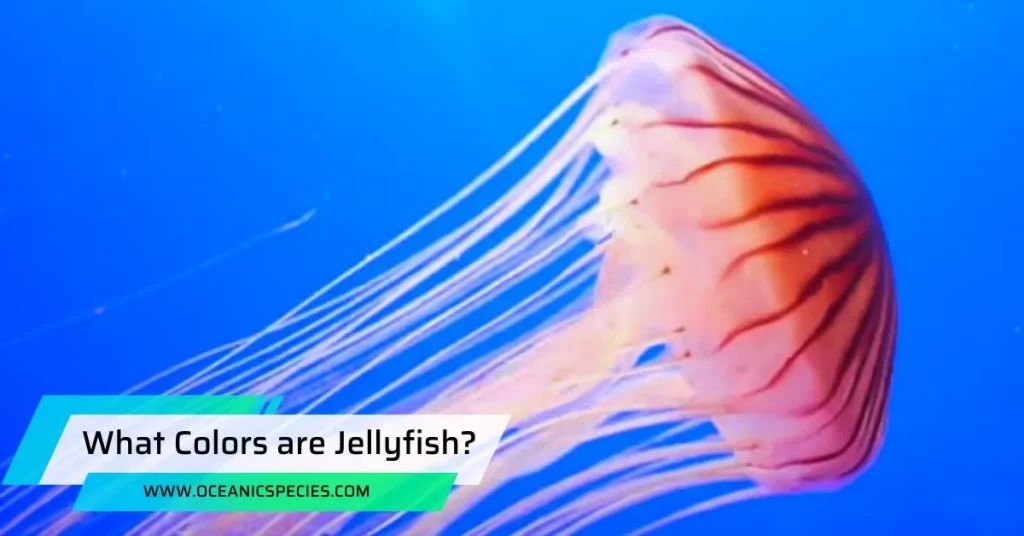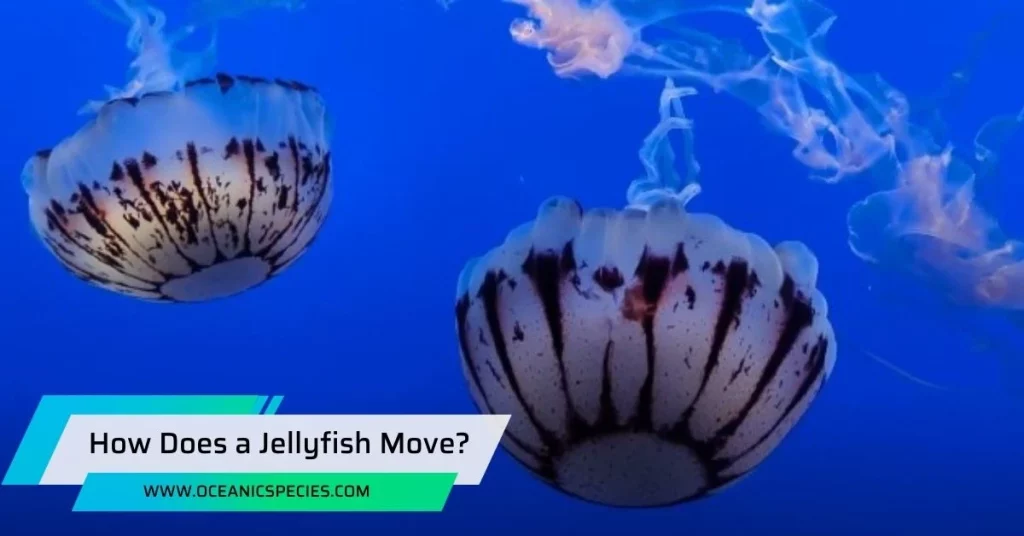Jellyfish colors range from lavender to indigo, with purple jellyfish being more common than they seem. Many species of jellyfish found in deep waters have these colors.
They can also change color according to their environment, with shades of blue, white, green, and red. Moon jellyfish, for example, are typically clear but can change color based on their diet. The different colors of jellyfish serve various purposes, including camouflage, attracting prey, and communication within their species.
Understanding the colors of jellyfish helps researchers study their behavior and ecology.
The Colorful World Of Jellyfish
Jellyfish come in a variety of colors, including lavender, indigo, blue, white, green, and red. Contrary to popular belief, purple jellyfish are actually more common than they may seem.
Jellyfish As Colorful Creatures
Jellyfish are known for their mesmerizing colors and unique beauty.
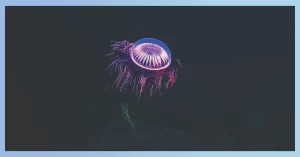
These marine organisms can exhibit a wide range of vibrant hues, making them a visual spectacle. Here are some key points about jellyfish as colorful creatures:
- Box jellyfish, also known as sea wasps, can be translucent or have a pale blue or green coloration.
- Moon jellyfish are typically transparent, but they can also have a pale pink, blue, or purple tint, especially near their reproductive organs.
- Lion’s mane jellyfish, found in the cold waters of the North Atlantic, are characterized by their vibrant orange, red, or brown colors.
- Some species, like the mushroom jellyfish, have a stunning fluorescent green glow, which is caused by the presence of bioluminescent proteins.
Importance Of Color In The Underwater Environment
In the underwater environment, color plays a vital role in the survival and interaction of marine organisms. For jellyfish, color serves several important functions. Here are some key points on the importance of color:
- Camouflage: Some jellyfish species, like the crystal jelly and sea nettle, have evolved to blend into their surroundings. They possess translucent or colorless bodies, allowing them to hide from predators or surprise their prey.
- Warning signals: Bright and vibrant colors can act as warning signals to potential predators. Many jellyfish species, such as the blue bottle jellyfish, have intense blue or purple hues, indicating their venomous nature and discouraging predators from attacking.
- Species recognition: Unique color patterns and markings help jellyfish identify and differentiate between different species during reproductive activities. These visual cues aid in successful mating and reproduction.
- Light absorption: Color pigments in jellyfish can also absorb specific wavelengths of light, allowing them to efficiently capture energy from their surroundings. This energy is essential for their growth, reproduction, and overall survival.
The Vibrant Palette Of Jellyfish
Jellyfish come in a vibrant palette of colors, including lavender, indigo, blue, white, green, and red. The color of their bodies can change depending on their environment.
The Different Colors Of Jellyfish:
Jellyfish come in a variety of stunning colors, ranging from vibrant hues to translucent and transparent shades. Let’s take a closer look at the different colors you can find in these mesmerizing creatures:
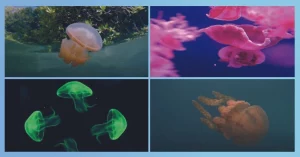
Lavender to indigo:
Some species of jellyfish display beautiful shades of lavender and indigo, adding an ethereal touch to their appearance. Their colors can range from light lavender to deep indigo, creating a captivating visual spectacle. These jellyfish are often found in deep waters and are more common than you might think.
Pink hues:
Pink-colored jellyfish are quite popular and easily recognizable. Their delicate pink hues give them a soft and graceful appearance. Pink jellyfish can range from pale blush to vibrant magenta, making them a sight to behold.
Orange and yellow tones:
Jellyfish in shades of orange and yellow create a stunning contrast in the underwater world. These vibrant colors are often found in tropical regions and add a pop of brightness to the surrounding marine environment. The warm tones of orange and yellow make these jellyfish stand out in the water.
Blue and green shades:
Blue and green jellyfish evoke images of the ocean and its tranquility. These colors are a result of the presence of pigments and special cells in their bodies. From deep ocean blue to shimmering emerald green, these jellyfish exhibit a captivating color palette.
Translucent and transparent variations:
Some jellyfish species appear almost transparent or translucent, allowing us to see through their bodies. These jellyfish may have a slightly bluish or whitish tinge due to the water’s reflection and their own structural proteins. Their transparent nature adds to their mystique and makes them seem almost otherworldly.
The Significance Of Jellyfish Colors
Purple jellyfish are actually more common than they might seem, with lavender to indigo colors.
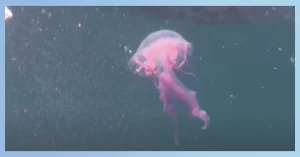
The color of jellyfish can change according to their environment, appearing blue, white, green, red, and more.
Jellyfish come in a stunning array of colors, and these colors serve various purposes in their underwater world. Let’s dive into the significance of jellyfish colors and explore the reasons behind their vibrant hues.
Attracting Prey And Mates:
Vibrant colors, such as purple, pink, and orange, can attract the attention of prey or potential mates in the water. Bright colors act as a visual stimulus, making it easier for jellyfish to catch their prey, which often consists of small fish and plankton.
Male jellyfish may use their bright colors to attract female jellyfish during the breeding season, signaling their availability for reproduction.
Camouflage And Protection:
Some jellyfish have the ability to change colors or bioluminesce, allowing them to blend in with their surroundings or confuse predators. Transparent jellyfish are virtually invisible in the water, making it easier for them to ambush their prey and avoid detection.
Some species have specialized cells called nematocysts that contain toxins. The colors on their bodies serve as a warning sign to potential predators, signaling their toxic nature and discouraging attacks.
Communication And Species Recognition:
Each species of jellyfish has its own unique color patterns, which help them recognize members of their own species and communicate with each other. Vibrant colors on the bell or tentacles can act as a visual signal to other jellyfish, conveying messages related to reproduction, territory, or aggression.
Color patterns also play a role in distinguishing between different life stages of the jellyfish, such as juveniles and adults.
Frequently Asked Questions
What Is The Most Common Colour Of Jellyfish?
The most common color of jellyfish is lavender to indigo, although jellyfish can change colors depending on their environment and diet.
Can Jellyfish Change Colors?
Jellyfish can change colors according to their environment, including blue, white, green, red, and more.
What Do Colors On Jellyfish Mean?
Moon jellyfish are usually transparent, but their color can change based on their recent diet.
What Jellyfish Change Color From Yellow To Pink?
Moon jellyfish change color depending on their diet, mimicking the color of the food they consume.
What Colors Can Jellyfish Be?
Jellyfish can come in a variety of colors, including blue, white, green, and red. Their color can change according to their environment.
Conclusion
O Jellyfish come in a variety of colors, ranging from lavender to indigo, making them a fascinating sight in the deep waters. Purple jellyfish, which are often mistaken for their pink counterparts, are actually quite common. These captivating creatures have the ability to change their body color based on their environment, thanks to their symbiotic relationship with photosynthetic organisms called zooxanthellae.
Depending on their diet, jellyfish can take on different colors, such as blue, white, green, and red. The color-changing feature adds to their mystique and allure. Observing jellyfish in their natural habitat allows us to appreciate the intricate beauty and diversity of these marine animals.
Whether they are mesmerizing us with their vibrant colors or appearing almost transparent, jellyfish continue to captivate our imagination with their enchanting presence. The world of jellyfish is truly a kaleidoscope of colors, inviting us to explore their stunning variations.

